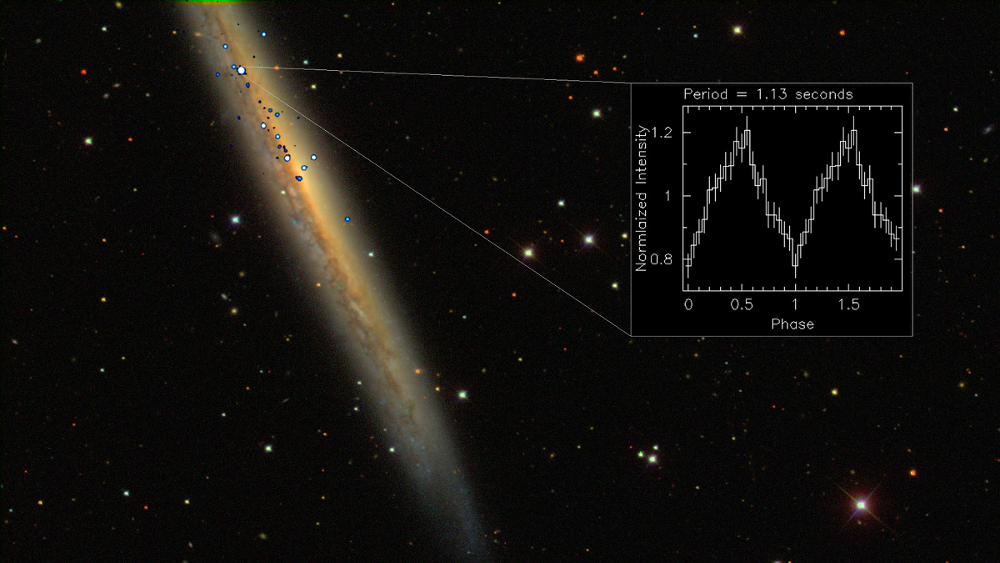
 Credit: Credit: ESA/XMM-Newton; NASA/Chandra and SDSS
Credit: Credit: ESA/XMM-Newton; NASA/Chandra and SDSS
Ultraluminous Pulsar
Strangely bright X-ray sources dot the sky. These objects, called Ultraluminous X-ray Sources (or ULXs), emit more X-rays than can be produced by accretion onto a stellar-mass black hole, yet are much less bright than accreting supermassive black holes. More than two hundred confirmed or suspected ultra-luminous X-ray sources are known. Theories to explain these objects include extremely powerful supernovae, powerful beams of X-rays emitted from compact objects, and accretion on a previously unidentified population of intermediate-mass black holes with masses of thousands of time the mass of the sun. A systematic new study of transient X-ray sources detected by the XMM-Newton X-ray observatory, using observations with XMM and the NuSTAR X-ray observatory, has provided an important new piece to the ULX puzzle. This study has shown that the ULX detected in the galaxy known as NGC 5907 shows X-ray emission that rises and falls with a stable period of slightly more than one second. The location and X-ray pulsation of this ULX is shown above, superimposed on an optical image of the galaxy. The detection of this stable pulsational period identifies this particular source as a rotating neutron star that's accreting material, probably from a hidden companion star. But why is the level of X-ray emission so high from this neutron star? The best explanation is that the magnetic field of this neutron star is very powerful and complex, generating bright X-ray emission in a narrow beam. Could this process provide the explanation for the other ULX sources? If so, where are the intermediate mass black holes?
Published: March 13, 2017
<
HEA Dictionary ● Archive
● Search HEAPOW
● Other Languages
● HEAPOW on Facebook
● Download all Images
● Education ● HEAD
>

Each week the HEASARC
brings you new, exciting and beautiful images from X-ray and Gamma ray
astronomy. Check back each week and be sure to check out the HEAPOW archive!
Page Author: Dr. Michael F. Corcoran
Last modified Monday, 26-Feb-2024 17:20:41 EST


